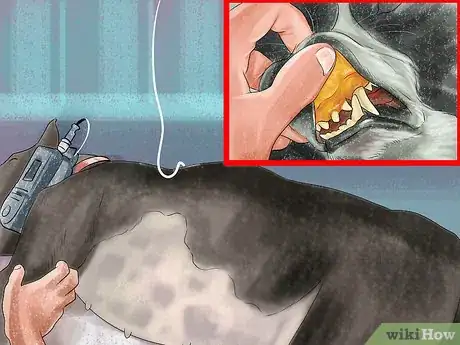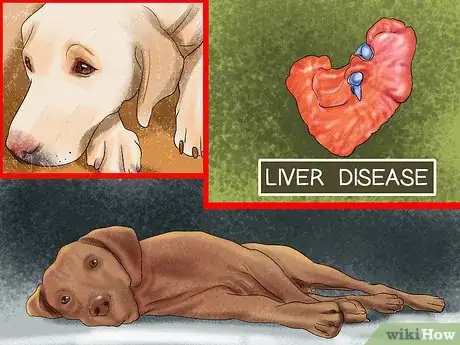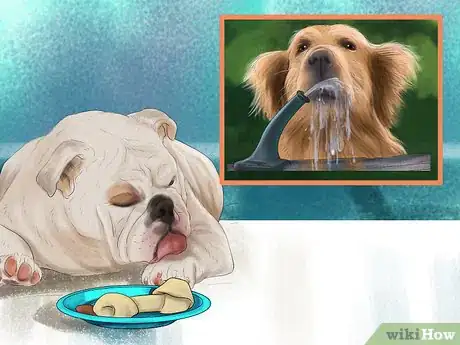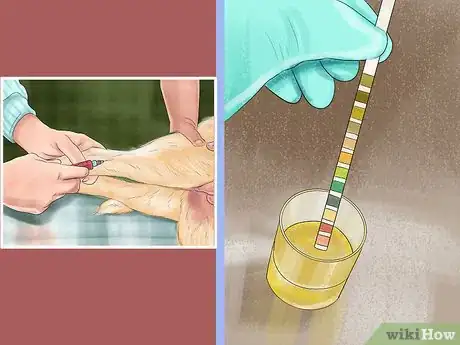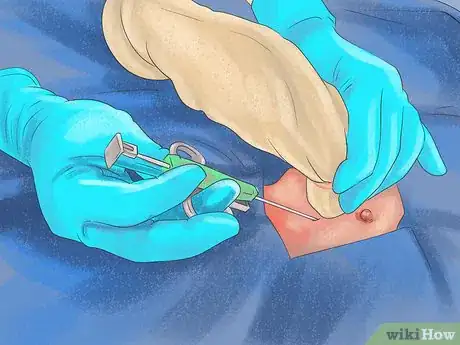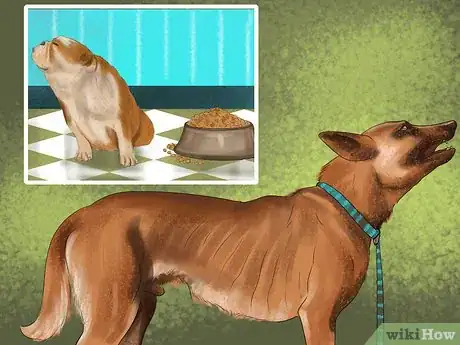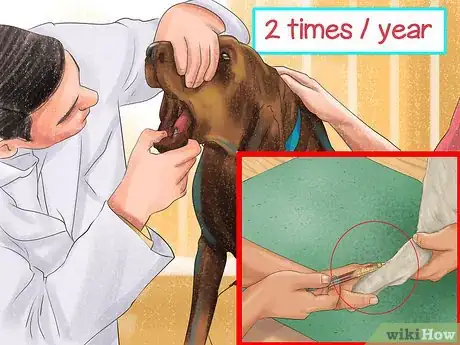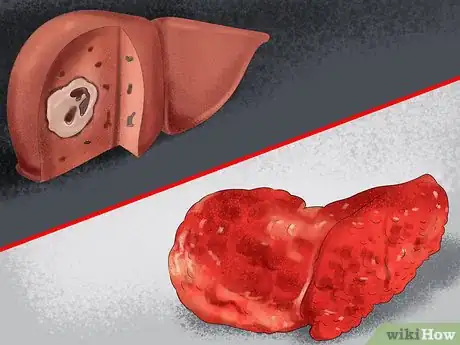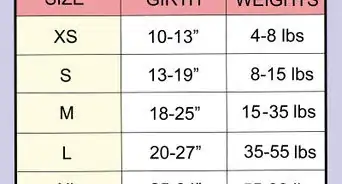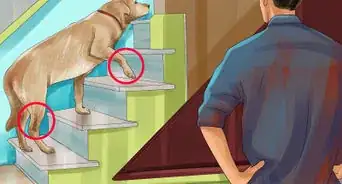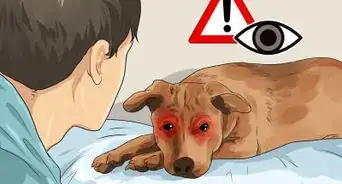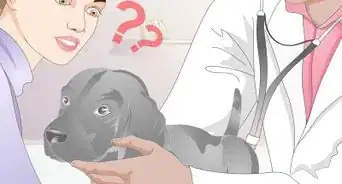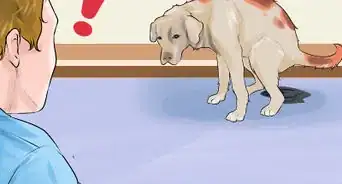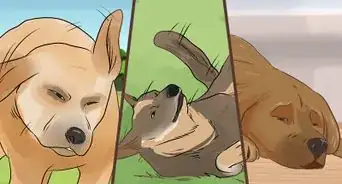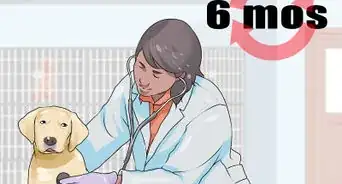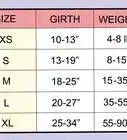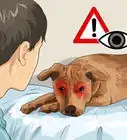This article was co-authored by Pippa Elliott, MRCVS. Dr. Elliott, BVMS, MRCVS is a veterinarian with over 30 years of experience in veterinary surgery and companion animal practice. She graduated from the University of Glasgow in 1987 with a degree in veterinary medicine and surgery. She has worked at the same animal clinic in her hometown for over 20 years.
This article has been viewed 25,792 times.
Liver diseases are one of the most serious conditions that can afflict older dogs. Unfortunately, making a diagnosis of liver disease in older dogs is difficult because many associated symptoms can also be attributed to old age. Because of this, many dogs go untreated despite potentially life-threatening conditions. However, by informing yourself about common symptoms, working with a vet or specialist, and learning about liver disease in older dogs, you’ll make strides in diagnosing life threatening liver conditions in your older dog.
Steps
Watching for Symptoms
-
1Look for changes to the dog’s physical appearance. Changes in your dog’s physical appearance can give you a lot of information about chronic conditions like liver disease. However, identifying changes in an older dog’s physical appearance is challenging as you may confuse them with natural changes due to old age.
- Look for decreased weight.
- See if the dog has yellowing of gums, tongue, and eyes.
- Observe to see if the dog has a bloated belly.
- Any noticeable change in your dog's appearance over the course of several months could be indicative of liver disease or another serious illness.
- Evidence of changes in a dog’s physical appearance should be assessed with other symptoms to help come to a proper diagnosis.
- If you suspect your dog may be ill, keep a daily journal in which you record observations of the dog's appearance and behavior.
-
2Identify symptoms that impact the dog’s behavior. Identifying behavior changes is problematic, as changes in a dog’s behavior can also be dismissed as the natural outcome of old age. As a result, you should focus on several symptoms that, when combined with other signs, may indicate liver disease in older dogs.
- Weakness is a common symptom of liver disease in old dogs. This symptom is complicated as older dogs also lose strength and have less energy than they once did.
- Lethargy may be an indication of liver disease.
- Confusion, while possibly indicating other problems, is a relatively common symptom of liver disease.[1]
Advertisement -
3Observe changes in the dog’s eating or bathroom habits. Changes in the way your dog eats or goes to the bathroom may be signs of liver disease. But like other symptoms, these signs are often dismissed as signs of old age. Look for:
- Loss of appetite.
- Increased thirst.
- Frequent urination.
- Blood in urine or fecal matter.
- Diarrhea.[2]
Consulting a Veterinarian
-
1Meet with your vet. The first thing you need to do after observing symptoms that could indicate liver disease in older dogs is to make an appointment with your vet. Your vet will take into account the symptoms you observed, examine your dog, and run basic diagnostic tests.
- The doctor will conduct a thorough examination of the dog, looking at their coat, abdomen, gums, and more.
- The vet will run basic blood work.
- They may also conduct a urinalysis and run a fecal test. [3]
-
2Talk to a specialist. After talking with your vet, they may refer you to a specialist. Veterinary specialists often have more education and experience with uncommon conditions like liver disease. Thus, they may be your best bet if you are concerned about your dog’s health.
- Some vets may have substantial experience treating certain liver conditions and may not refer you to a specialist.
- Most metropolitan areas have veterinary specialists that are trained and experienced with treating liver disease in older dogs.
- Your vet might also refer you to the veterinary school of a local college or university. Very often, these institutions will have specialists who are active in the field any may be participating in studies focused on liver disease or on issues associated with older dogs.[4]
-
3Have advanced tests run. After seeing your vet or specialist, they may recommend running advanced diagnostic tests. These tests will focus on gathering more information about your pet’s condition and will ultimately help the vet or specialist arrive at a diagnosis for your dog. Some tests they may recommend include:
- X-rays, ultrasounds, or an MRI.
- Advanced blood tests that measure liver enzyme levels, blood proteins, or ammonia levels.
- Biopsy of the liver.[5]
Educating Yourself about Liver Disease and Your Dog’s Health
-
1Inform yourself about conditions that impact older dogs. Central in diagnosing liver disease is being able to differentiate its symptoms from common symptoms and conditions that impact older dogs. By learning about the canine aging process, you’ll be better prepared to understand and deal with liver disease.
- Older dogs lose energy and are less vibrant than they once were.
- Many older dogs will become frail and lose muscle mass.
- Some older dogs may become incontinent and/or lose appetite.
- These changes usually occur in aging dogs over many years, not over a period of months.[6]
-
2Take your dog to the vet twice a year. Regular visits are important as they establish benchmarks for your pet’s health. As a result, any changes in your dog’s appearance or behavior will be much more evident than if they do not have regular checkups.
- Your vet will run a special blood panel for older dogs. Bloodwork may be able to catch liver disease in its early stages.
- Older dogs should visit the vet at least twice a year. By visiting the vet twice a year, you may be able to catch liver disease in its early stages, potentially increasing the life of your dog.[7]
-
3Know about different types of liver disease. There are an array of liver diseases that can impact older dogs. Common types of liver disease include:
- Liver cancer or tumorous growths on the liver.
- Cirrhosis.
- Canine Hepatitis.
- Chronic liver disease caused by the consumption of toxic food or plants.[8]
References
- ↑ http://pets.webmd.com/dogs/liver-disease-liver-failure-dogs
- ↑ http://pets.webmd.com/dogs/liver-disease-liver-failure-dogs
- ↑ https://www.proplanveterinarydiets.com/health-nutrition/liver-disease-in-dogs/
- ↑ http://speakingforspot.com/blog/2016/08/07/causes-and-treatment-of-canine-liver-disease/
- ↑ http://www.abbey-vetgroup.co.uk/Dogs_Liver_Conditions.html
- ↑ http://www.petmd.com/dog/conditions/endocrine/c_multi_hepatic_failure_acute
- ↑ http://www.petmd.com/dog/care/evr_dg_caring_for_older_dogs_with_health_problems
- ↑ http://www.abbey-vetgroup.co.uk/Dogs_Liver_Conditions.html
About This Article
To recognize liver disease in an older dog, start by looking for changes in your dog’s appearance. For example, you might notice yellowing of the gums and eyes, weight loss, and bloating of the belly. Additionally, watch for behavioral symptoms such as weakness, lethargy, or confusion. Your dog’s appetite and eating habits may change as well. For instance, keep an eye out for a decrease in appetite or an increase of thirst. You should also note differences in bathroom habits, like increased urination, diarrhea, or blood in your dog’s urine or feces. Keep reading for more advice from our Veterinarian co-author, including how to get a medical diagnosis for your dog.
